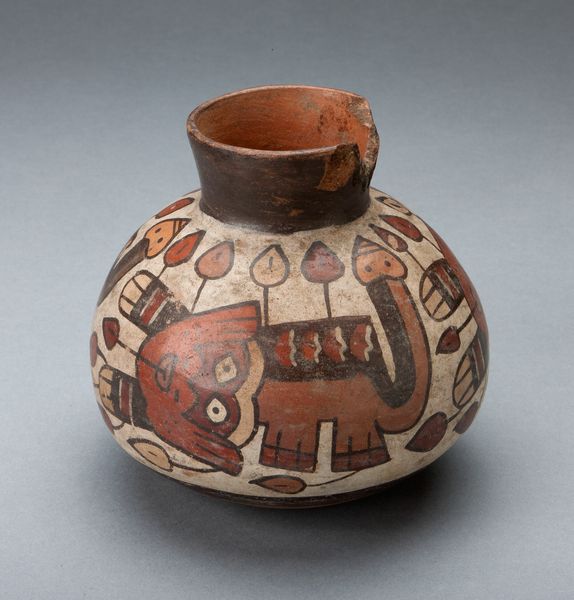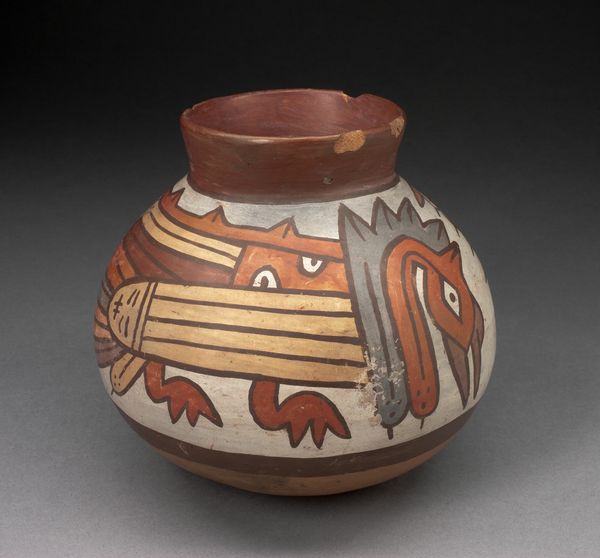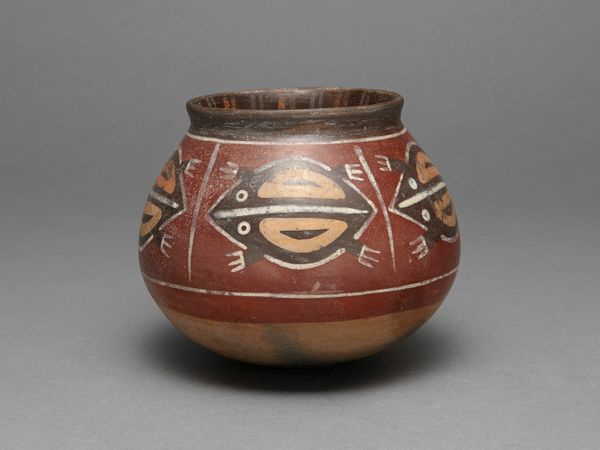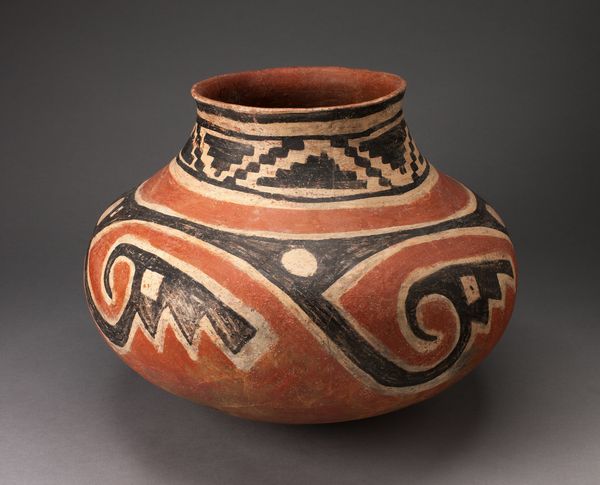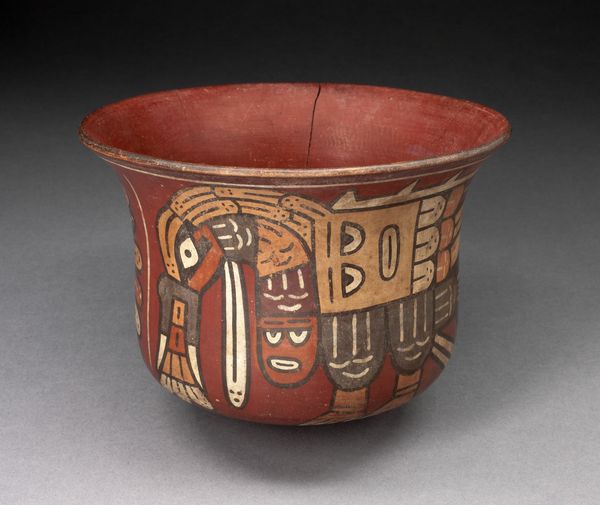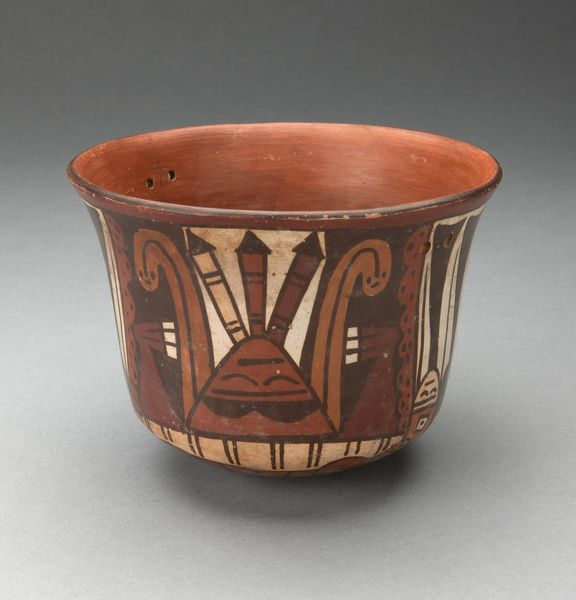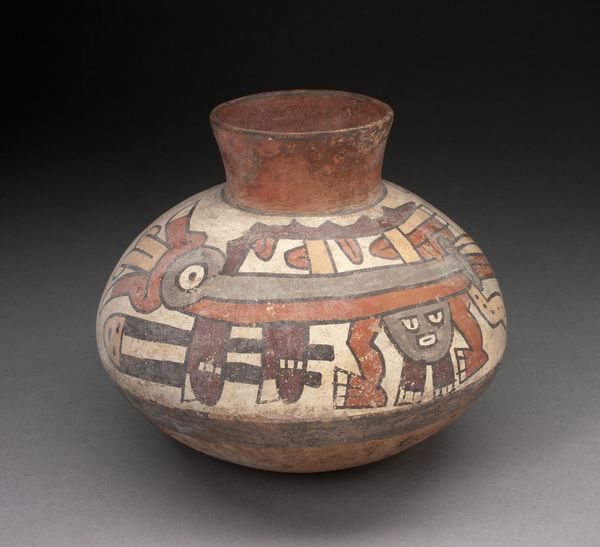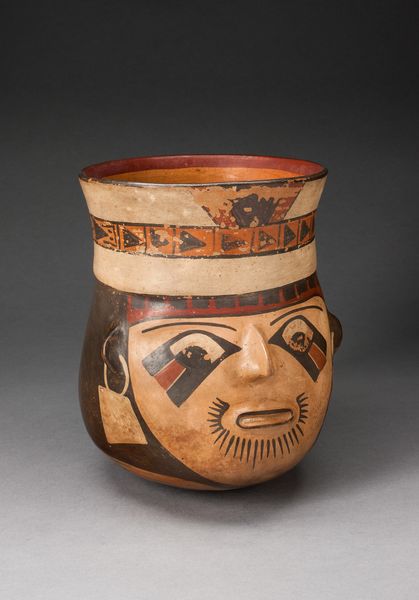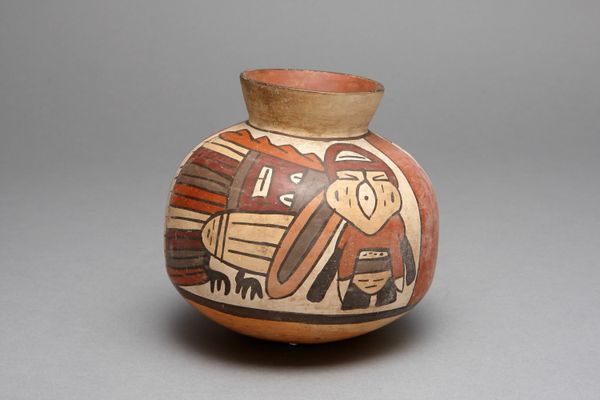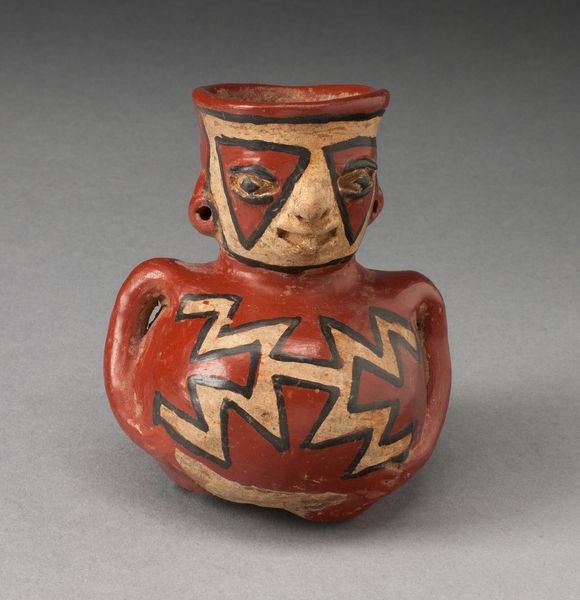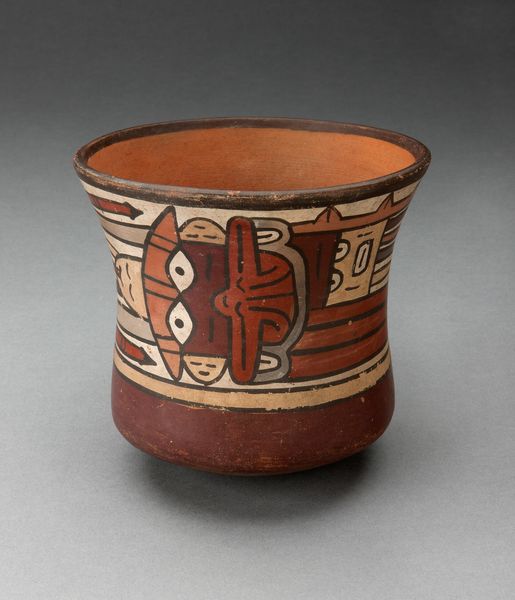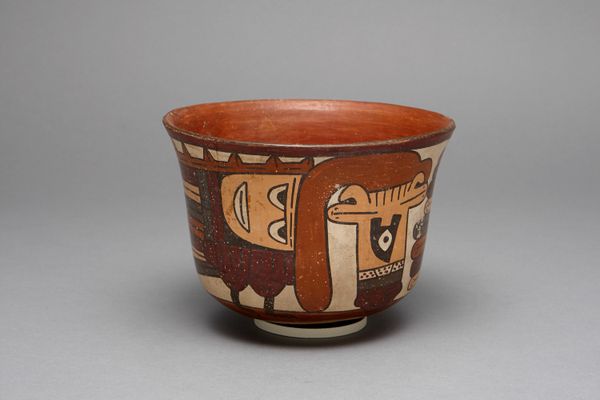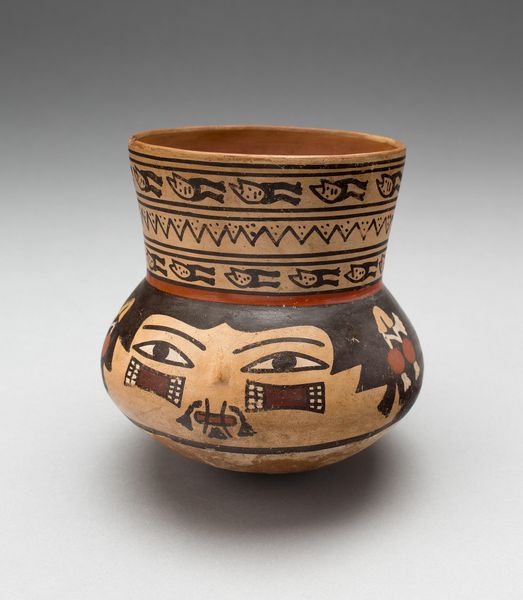
ceramic, earthenware
#
ceramic
#
figuration
#
earthenware
#
ceramic
#
indigenous-americas
Dimensions: 11.9 × 11.1 cm (4 11/16 × 4 3/8 in.)
Copyright: Public Domain
Face painting has a long cultural history… it’s been suggested that even the very earliest humans used temporary face paint during hunts. This jar dates to the Nazca culture, which flourished on the desert valleys on southern coast of Peru between 100 BC and 800 AD. Archaeologists believe that this specific jar was created between 180 BC and 500 AD. The jar is in the form of an abstract human face, with a three-dimensional nose. The face painting is immediately obvious. We can see black vertical marks adorning the chin, and deep orange triangles underneath the eyes. The lips have also been coloured, using a dark red shade. ️ To make these bold shades, watery pigments were mixed with clay to create a wash. The mixture was then applied to the ceramic jar, before it was fired to lock in the colour. The high temperatures allowed for long-lasting colour. The jar would then be polished for a smooth finish. What functions do you think this jar would fulfil? In Nazca culture, heads had powerful spiritual significance. They were even believed to house the spirit. Some ceramic heads were worn as trophies, on a string around the neck. These trophy heads often had closed or crossed eyes, to symbolise that the wearer had defeated his enemies in battle. This jar, however, features open eyes with black pupils. It probably wasn’t intended as a trophy. Rather, it might have been used for ceremonial or festive purposes.
Comments
No comments
Be the first to comment and join the conversation on the ultimate creative platform.
